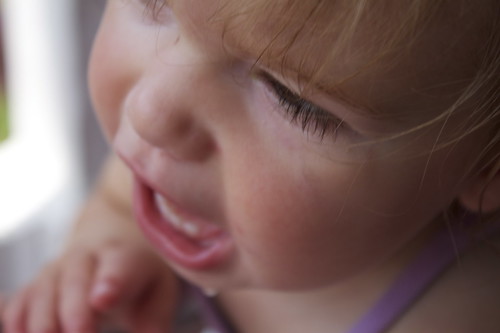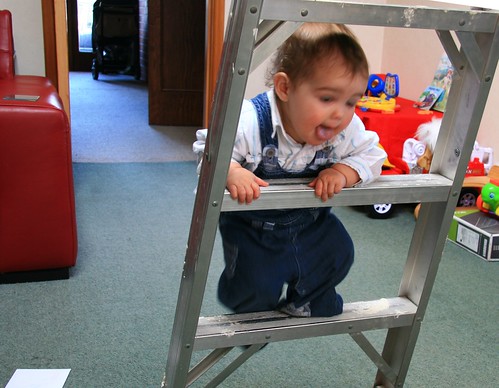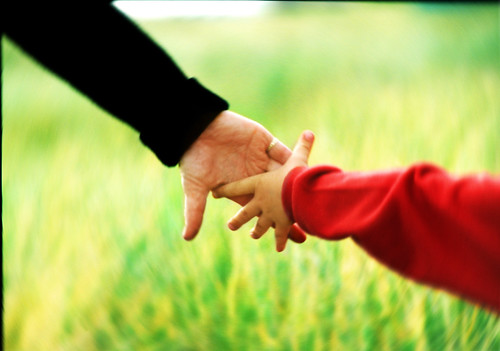“As much as we want to do for and give to our children, we can’t pour into them when we’re running on empty. Every once in a while, and definitely more often than most of us do, we need to fill our own buckets. This looks different for each of us – walking, exercising, reading, writing, scrapbooking, Zumba – whatever it is, I’d encourage you to just do it! And not feel guilty about it…. Put on your own oxygen mask first! Self-care is not selfish. It simply enables you to breathe.” Tammi
I always thought the Peace Corps got it wrong; theirs isn’t “the toughest job you’re ever going to love”- parenting is! The airlines, on the other hand, got it right: if you’re traveling with a child, and an oxygen mask becomes necessary, you should secure your mask before turning your attention to your child’s needs. This is good advice for parenting in general.
Take care of yourself so that you can be present for, and take care of your child. Make sure you are well nourished, and well rested. (Take naps when your child does, if you can.) Don’t feel guilty about turning off the phone and the computer at times – the phone calls and messages will wait. Lower your expectations for yourself in terms of keeping a perfectly clean home and cooking gourmet meals. (Get ye to Trader Joe’s if you’ve got one near you.)
Ask your partner to pitch in with chores and childcare (and be gracious enough to allow him or her to do things his/her own way). Hire all the help you can afford, or if you can’t afford help, trade off an afternoon of childcare with another Mom, and/or ask family or friends to help out when you need it.
Buy yourself flowers, take deep breaths often, go to the park and talk to other Moms, or join a free on-line community. You know what it is that will best nurture and sustain you, and if you don’t, you need to figure it out. Then take/make time to do whatever it is that nurtures you on a regular basis.
Who really cares if your children are wearing two different colored socks when it comes right down to it? (They may be trend setters!) You can drive yourself crazy trying to maintain some perfect standard, or you can relax, and enjoy your time with your child. You can only do so much in a day. It’s important to figure out who and what is truly important to you, and focus your energy there. No guilt allowed! “Do less,enjoy more,” was Magda Gerber’s mantra, or would have been, had she had a mantra!
When times are hard, remind yourself that whatever it is, it will pass. While I don’t agree with time out for children, I highly recommend regular time out for adults! Here are a few ways to accomplish a time out for yourself when you are feeling impatient or at your wits end:
One way is to be honest and say to your child, “Things aren’t working right now. I feel impatient and need a break.” Once you’ve said this, take a break! Place your child in a safe place with some books and toys, take a deep breath, and make a cup of tea. Though I generally don’t advocate TV for young children, if you are not adverse to the idea, NOW is the time to pop in that 30 minute Sesame Street video.
Or, you can practice a technique a fellow colleague of mine calls Stop, Drop, and Roll (with the punches). When you feel yourself starting to lose perspective, ready to cry, or yell at your child, JUST STOP.
Stop trying to do whatever you were trying to do (or encourage your toddler to do), get down on the floor with her, and play for ten minutes. You can read a story, sing a song, do some yoga poses, or best of all, quietly observe your child and enjoy her.
Remind yourself that you love her. Remind yourself that whatever it is that seems so impossible in this moment will pass in time. When you are ready, start fresh again. It may sound crazy, but I know from experience and parent testimonials- “It works! It works!”
Another idea is to take the baby and get outside in nature. A simple walk around the block can do wonders for your mood, and for your child’s.
Remember, you are your child’s first role model and teacher. If you don’t pay attention to, and make it a priority to take time to take care of yourself, how can you expect to teach your child to focus, co-operate, and participate in her own self care?
For those who are parents of babies and young toddlers, and like to read, here are two books I recommend: Mama Zen, Walking The Crooked Path of Motherhood, and 1, 2, 3 The Toddler Years, A Practical Guide For Parents and Caregivers.
We aren’t born with the skills necessary to know how to parent our children well, and in many cases we haven’t had good role models ourselves. Even if we have had good role models, our parents may be deceased, or we may live far away from them.
It is so important for parents today to find a community, and not to live in isolation. Take advantage of every available resource open to you to gain information and support. There are free and low cost resources in every community- so you need not feel support and help are out of reach if you don’t have a lot of money.
Be good to yourself, and this will enable you to not just survive, but to thrive, and enjoy your child’s early years!
What ways you’ve found to nourish and take care of yourself as a parent? Please share!
Updated: October 2, 2012














